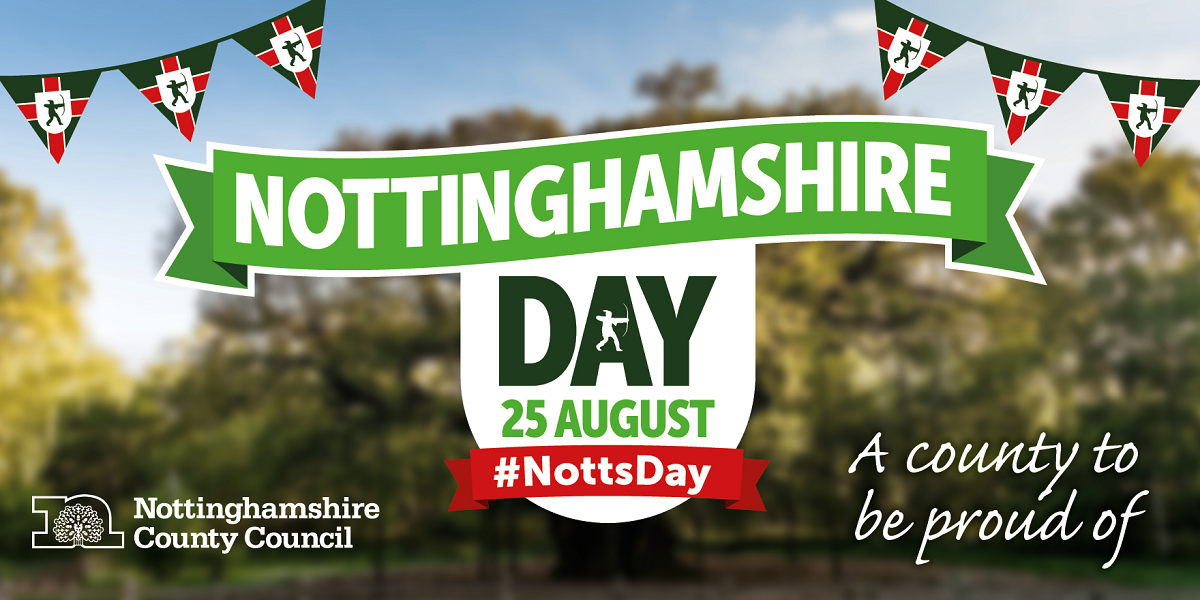
Every year on 25 August, we join the county in commemorating Nottinghamshire Day. This annual event marks the start of the English Civil War, a catastrophic series of conflicts that took place in the 17th century.
On 22 August 1642, Charles I raised the Royal Standard just outside Nottingham Castle, declaring war on Parliament. This defiant act is widely regarded as the moment the English Civil War officially began.
The ongoing battles between the Parliamentarians and the Royalists lasted for nine years, deeply dividing the country.
A snapshot of the Civil War in Nottingham
After years of unrest, relations between the King and Parliament reached breaking point in 1642. As Royalists and Parliamentarians fought to control the country, the two sides prepared for an inevitable war.
After trying, and failing, to arrest a group of MPs, Charles fled London in disgrace. He travelled north with the aim to recruit troops and prepare for battle. With several large Royalist strongholds in the East Midlands, he headed to Nottingham, confident he would be able to build a following.
It was on Derry Mount in Nottingham (now known as Standard Hill) that Charles raised the Royal Standard, officially declaring war between Parliament and the Crown. Unfortunately for Charles, Nottingham was divided in loyalty, and he failed to garner the support he needed. He headed for Shrewsbury to continue building his army, but as soon he left Nottingham, the city immediately fell to the Parliamentarians.
At this time, John Hutchinson was the Governor of Nottingham Castle. He ended up playing a crucial part in the Civil War, managing to hold the city, despite repeated attacks from the Royalists. When Charles was executed for treason after the war, Hutchinson was one of the many signatories on his death warrant. He later ordered for the demolition of Nottingham Castle and its walls, so that it could never be used in a war again.
Newark at war
Like Nottingham, Newark played a significant role in the English Civil War. Due to its location at the junction of the Fosse Way and the Great North Road, it was easily accessible for people travelling across the country.
As Newark Castle and much of the surrounding land were owned by the Crown, Newark became a Royalist stronghold. Despite being besieged three times, the town remained loyal to the King until the end. By 1646, conditions in Newark had become so intolerable, Charles himself ordered the town to surrender. Shortly after, the King also surrendered himself in nearby Southwell, and the Civil War was all but won.
Sparked your interest? Check out our dedicated blog post to learn more about the Civil War in Nottinghamshire.
Celebrating Nottinghamshire Day
If you want to commemorate Nottinghamshire Day, here are 10 key locations you can visit to start your journey through history:
1. Standard Hill
It was on Standard Hill (formerly known as Derry's Mount) that the Royal Standard was raised by King Charles I, initiating the start of the conflict. Look out for the plaque that marks the location where history was changed forever.
2. Nottingham Castle
The Royal Standard was actually raised at Nottingham Castle first, before being raised again on Standard Hill. Occupied by both sides, and the site of many a siege, visit the castle to follow in the steps of Colonel John Hutchinson, the governor of Nottingham Castle during the war.
3. Nottingham Contemporary
Now a modern art gallery, the Nottingham Contemporary building stands on the former site of the Town Hall, which was used to store munitions and supplies during the Civil War.
4. St Nicholas Church
Occupied by Royalists for 5 days, the spire of St Nicholas Church was used as a lookout point during the sieges on Nottingham Castle. The original church was destroyed after the war, and the site remained desolate for 25 years. The church you can see today was completed in 1678.
5. Southwell Minster
Due to its close proximity to Newark, Southwell was an important location in the Civil War. Southwell Minster suffered devastating damage during the war and was plundered for valuables. Although there's no evidence of any major battles in Southwell, the Minster was used to store horses and military supplies.
6. Archbishop’s Palace
Used as a base for the Scottish army in 1645, Archbishop’s Palace in Southwell was destroyed during the conflict. It is believed this is where Charles Ӏ would have met his advisers and, following his capture in Southwell, had his arrest formalised.
7. Newark Castle
The Royalist capital of the county. Visit Newark Castle today and you can still see the blackened stains of gunpowder on the gatehouse and the marks of cannonballs along the walls.
8. St Mary Magdalene Church
St Mary Magdalene Church in Newark was used as a lookout point and a place of worship during the Civil War. Look out for the hole in the spire – it is said to have originated from a cannon shot by Parlimentarian forces in 1644.
9. National Civil War Centre
Situated in Newark, the National Civil War Centre explores the history of the war in Nottinghamshire, and Newark’s role in the conflict.
10. Welbeck Abbey
Home to William Cavendish, 1st Duke of Newcastle and Royalist commander. Welbeck Abbey was stormed by the opposition in 1644, and briefly became a Parlimentarian garrison.
If you want to explore key historic sites across the county, you can also follow the Nottinghamshire Civil War Trail. This handy map highlights important locations in Newark, Nottingham and Southwell, allowing you to walk in the footsteps of heroes – and villains!
Nottinghamshire Day events
Despite its bloody history, Nottinghamshire Day is also a chance to celebrate everything we love about our wonderful county; the identity, the heritage and the local traditions. This annual event is an opportunity to come together and champion our local community and commemorate the history that helped shape the region.
To celebrate Nottinghamshire Day 2025, there will be a free community event taking place at Sherwood Forest, as part of the final weekend of the Robin Hood Festival.
Running over the Bank Holiday weekend, you can enjoy a whole host of medieval merriment, with live performances, immersive experiences and hands-on activities taking place over the three days.
To find out more about the Robin Hood Festival, head to our dedicated event page.
Related
Comments
Nobody has commented on this post yet, why not send us your thoughts and be the first?

 to add an item to your Itinerary basket.
to add an item to your Itinerary basket.











